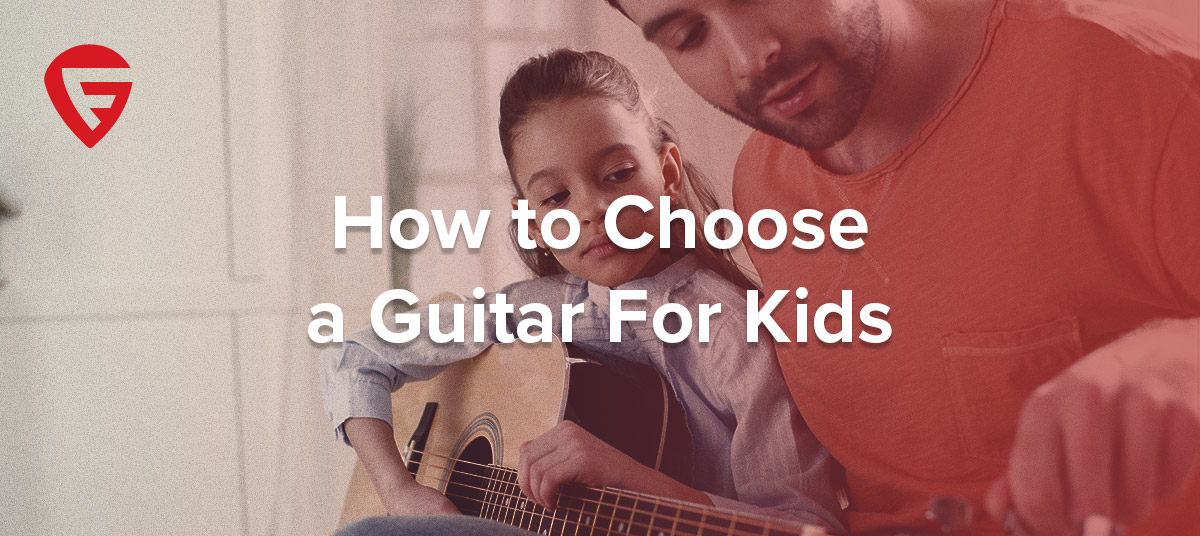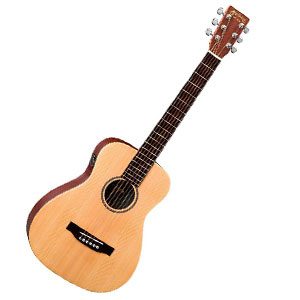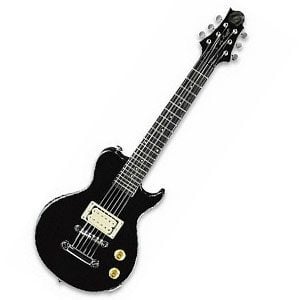- Home
- Instruments
- Gear
- Recording
- Lessons
- Reviews
- Blog

If your kids are getting old enough, and expressing interest in playing guitar, you are set with a task of finding one that will perfectly fit their age. For kids, one of the most important requirements when it comes to guitar is the comfort of playing. If they can’t play comfortably, your kids won’t be able to learn properly, nor develop correct techniques. That’s why choosing a guitar for a child is not that easy at all.
The general rule of thumb is that the age of your little one can help you figure out which guitar size is the best for them. We will talk about that more below. When people think of guitars for kids, they usually think of some cheap instruments that have a lousy sound, and even worse performance. That doesn’t have to be the case. As you’re about to find out, many reputable guitar brands offer models which are suitable for kids while giving you a decent performance.
If you want to delve right into the juicy part, we recommend checking out our list of Best Guitars for Kids on the market today. Still, we also recommend checking out our findings here, it can make the difference between making the right choice and opting for the wrong one.
Before we go any further, we need to define whether or your kid is more interested in playing an acoustic guitar, or an electric one. Generally, it’s recommended that kids start with acoustic guitars. They are simple to use and more unforgiving in a sense that each mistake on the fretboard is heard loud and clear. With that said, some kids simply want to go electric from the start, and that is fine as well. We will cover electric guitars later on in the text. For now, let’s talk about acoustic guitars.
 Acoustic guitars come in a variety of different shapes and sizes. Some of them are too large even for a grown adult to play, let alone a kid. So when you go shopping for an acoustic guitar for your kid, you have to take special considerations. A good rule of thumb is to buy standard sized guitars for children older than 12, and travel style acoustic guitars fro kids younger than 12.
Acoustic guitars come in a variety of different shapes and sizes. Some of them are too large even for a grown adult to play, let alone a kid. So when you go shopping for an acoustic guitar for your kid, you have to take special considerations. A good rule of thumb is to buy standard sized guitars for children older than 12, and travel style acoustic guitars fro kids younger than 12.
The size of the lower bout on a standard acoustic guitar is too much for most 7-year-olds to handle. That’s why we mentioned travel guitars. Travel and parlor guitars are ¾ scale guitars. They are generally smaller but offer a decent performance. These guitars weren’t necessarily designed for kids, but they are perfect for this purpose.
A lot of high tier brands offer parlor and travel guitars. You can find some that will sound incredible, which is definitely a good way to start your kid’s guitar playing career.
Another acoustic option would be ukuleles. There are several things to keep in mind, though. Ukuleles have a completely different neck and intonation. If your child is really having trouble with travel guitars, then ukuleles are a good place to start. However, if your kid is capable of handling a parlor guitar, we strongly recommend that you take that route from the start.
 Even though electric guitars come in fewer available sizes, they are naturally easier to play even for kids. There is no soundbox to get in the way, and the flat body of an electric guitar is comfortable enough for the young ones to handle. The only thing that might be an issue is the size of the fretboard. With that said, there are smaller electric guitars that were designed for kids and people of smaller stature.
Even though electric guitars come in fewer available sizes, they are naturally easier to play even for kids. There is no soundbox to get in the way, and the flat body of an electric guitar is comfortable enough for the young ones to handle. The only thing that might be an issue is the size of the fretboard. With that said, there are smaller electric guitars that were designed for kids and people of smaller stature.
These guitars might be the way to go if your child is having trouble with a regular electric guitar. If you decide to go electric from the start, we definitely suggest you get a small amp of some kind as well. When your kid starts practicing, they will need some kind of feedback. With an electric guitar, an amp is the only way to get that feedback.
Without one, your kid might develop wrong technique, and you don’t want that. A lot of stores will generally have a starter pack of some kind, which will include a guitar, an amp, a gig bag and more. These packs are great since you get everything you need to get started, and the price is often lower than it would be if you were to buy everything separately.
This is where we also have to mention bass guitars. Even though a very small portion of young kids shows interest in playing bass guitar, it’s worth giving some info on this topic as well. One issue with bass guitars is the thickness of the strings which might be a bit too much for kids to handle. If you have a youngster who is insisting on playing bass, we suggest you get a model with a shorter scale and some super light gauge strings.
If you can take one piece of information from this article, let it be this. Playing comfort is the priority. It doesn’t matter if you get a flagship Taylor model if your kid can’t play it. So comfort before anything else. Listen to your kid, and hear them out.
If they have a specific model in mind, but you don’t like it for reasons they can’t understand, try to find a similar model that fits the requirements. For more info on that subject, check out our article about things to avoid when shopping for a kids guitar here ’5 Things to Avoid When Shopping For Kids Guitars’.
After all, your kid is the one who’s going to be playing that guitar for the most part. It’s definitely important for them to like it because that first guitar will always have a special place in their heart. We hope you enjoyed the ride, rock on!

Reader Interactions